3.4.3: Leaf Modifications
- Page ID
- 37019
Learning Objective
Identify common leaf modifications and their functions, including storage leaves, succulent leaves, spines, tendrils, phyllodes, showy bracts, plantlets, and insect traps.
The structure and function of a leaf can be modified over the course of evolution as a plant adapts to a particular environment (Figure \(\PageIndex{1}\)). When function of the leaf blade is no longer primarily photosynthesis, some other plant part is usually modified to take its place. Storage leaves are thick leaves underground that store starch (as with a bulb; see Stem Modifications). Succulent leaves are also thickened leaves, but they are found above ground, still conduct photosynthesis, and function primarily in water storage (Figure \(\PageIndex{2}\)).
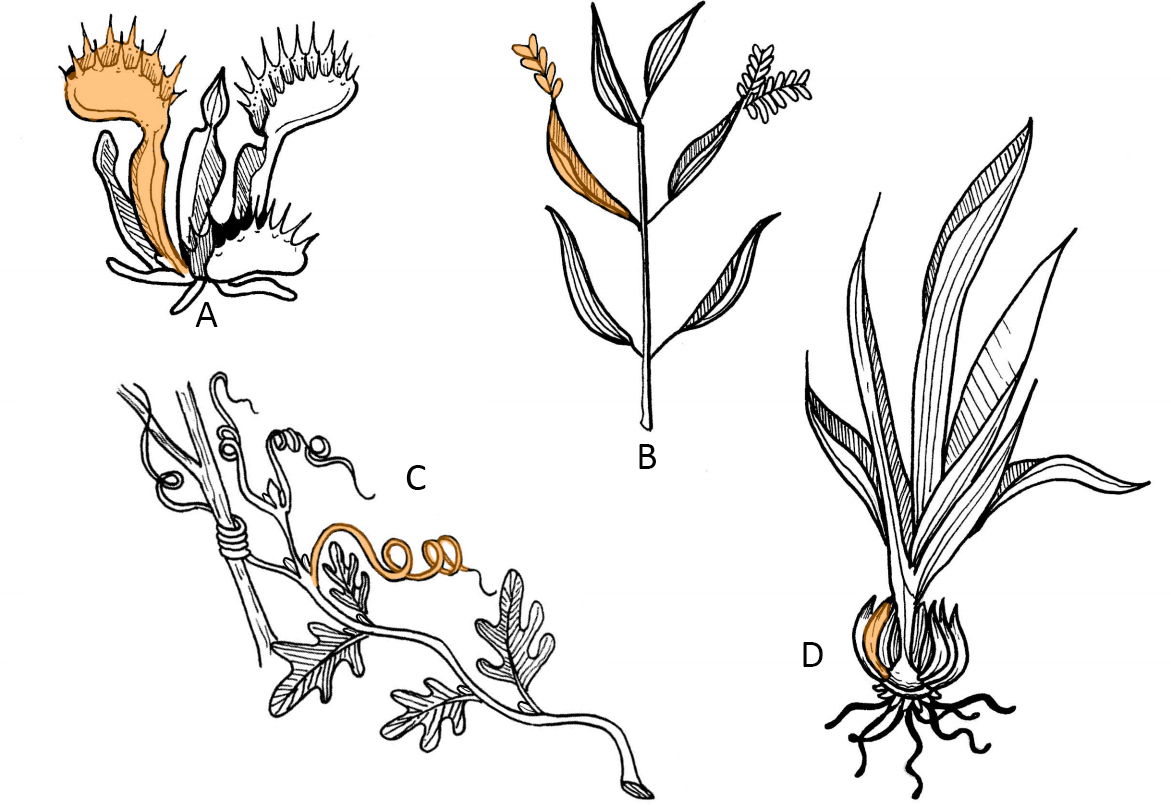

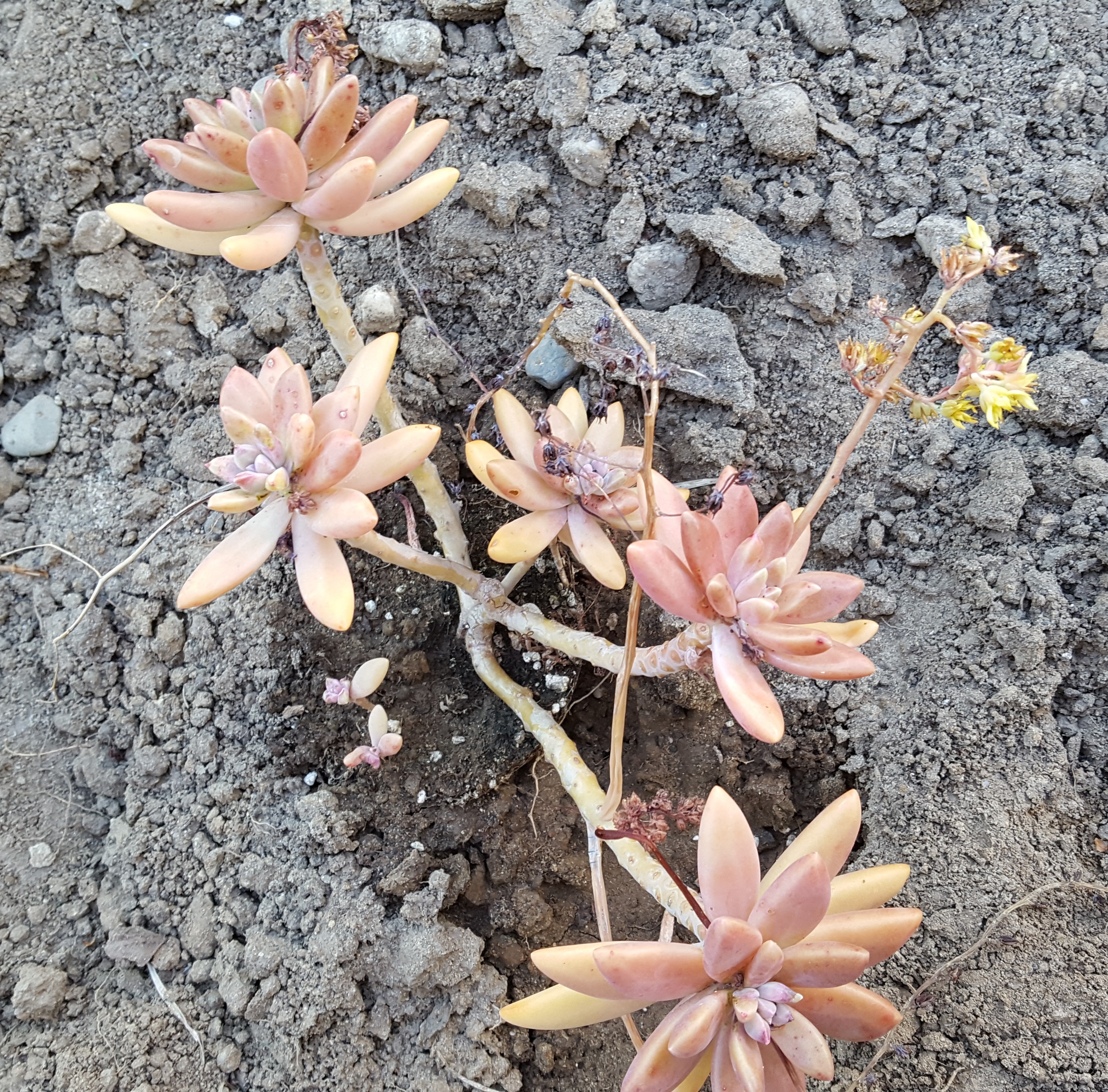
Spines are sharp projections derived from leaves that function in plant defense. Almost all cacti (in the plant family Cactaceae) have spines (Figure \(\PageIndex{3}\)). Other examples include barberry and some Acacia species, in which large spines house mutualist ants. Spines can also be formed from stipules (stipular spines) or bud scales. Recall from Stem Modifications that thorns and prickles have the same function, but they are derived from whole stems or the outer tissue layers of stems, respectively.
.jpg?revision=1&size=bestfit&width=402&height=259)
Tendrils are another structure that can originate from multiple structures, including stems, leaves, or leaflets. These are narrow, coiling structures that climbing plants attach to nearby structures for support (Figure \(\PageIndex{4}\)).
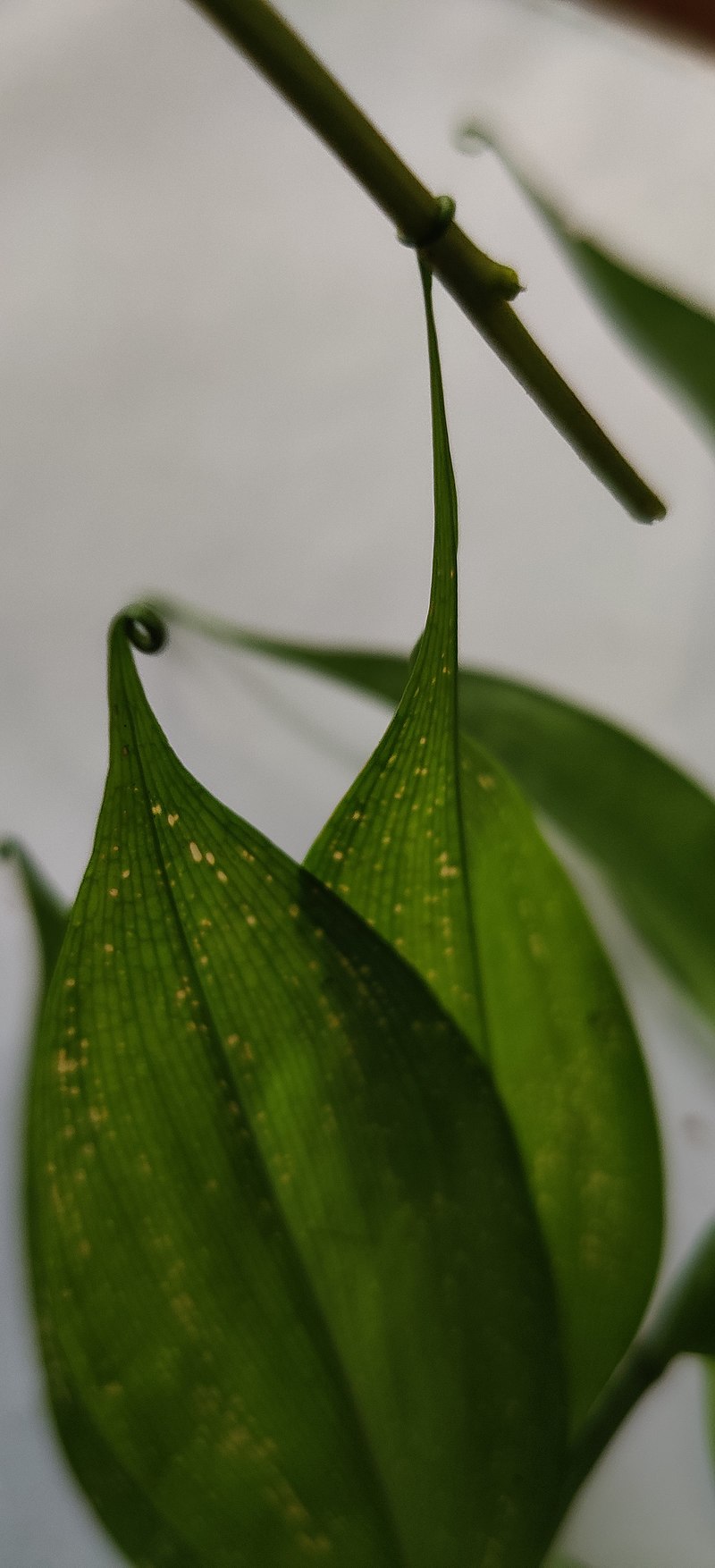

A phyllode resembles cladodes and phylloclades but refers to a flattened petiole that resembles a leaf blade (rather than a narrow stalk). The Australian acacias (Acacia) have phyllodes (Figure \(\PageIndex{5}\)).
Showy bracts are brightly colored leaves function in attracting pollinators. From a distance, showy bracts often appear like the petals of a flower. However, the actual flowers are typically small and in a cluster surrounded by the bracts (Figure \(\PageIndex{6}\)).
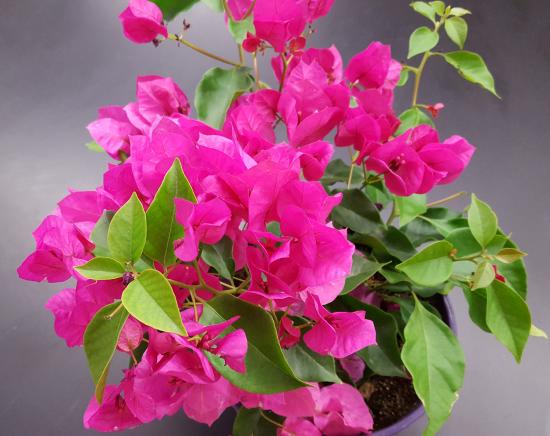
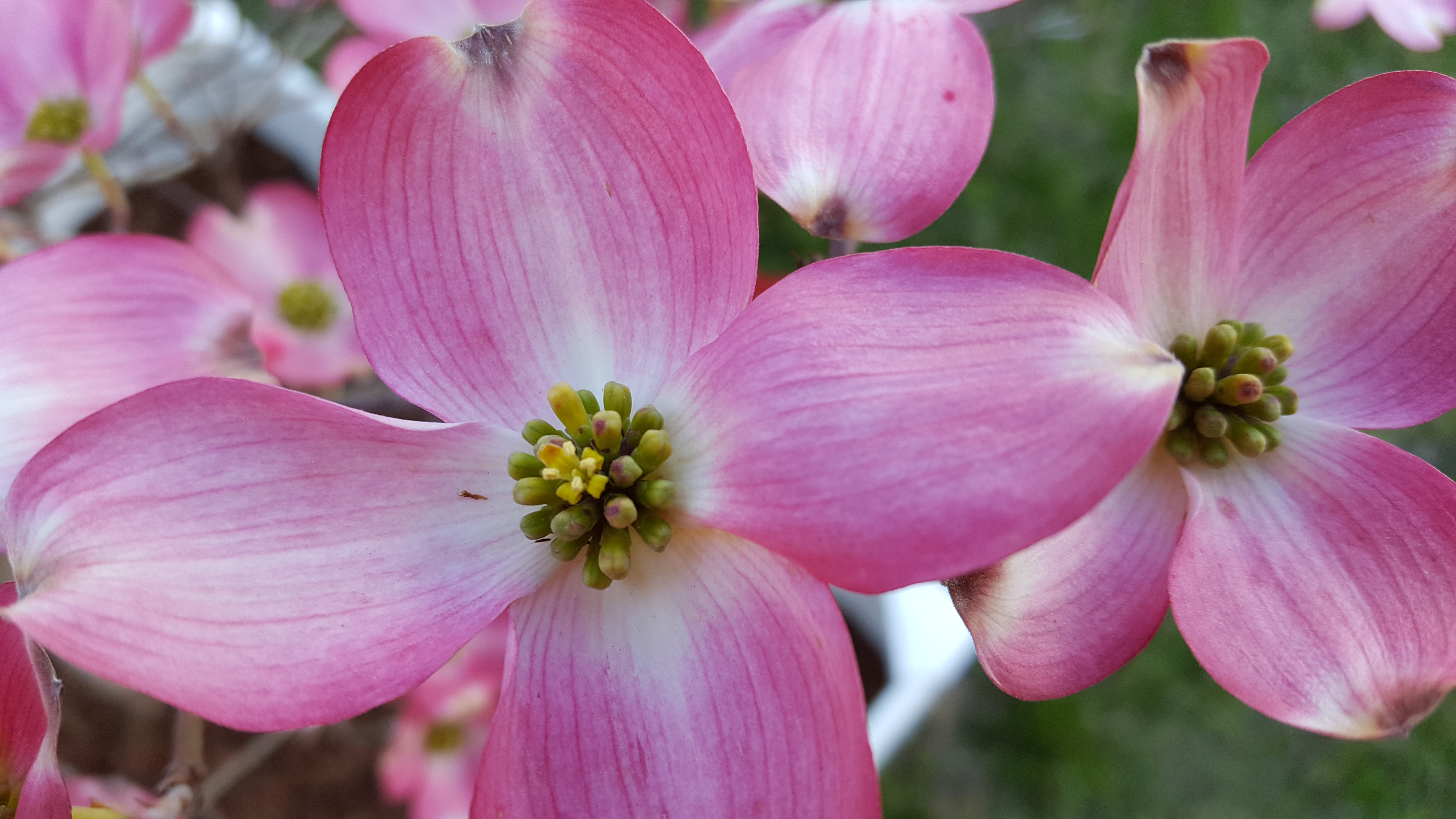
Plantlets are mini plants that grow on the main plant and then fall off and grow into new plants. In Kalanchoë , mitosis at meristems along the leaf margins produce tiny plantlets that fall off and grow independently into mature plants. This is a form of asexual reproduction (Figure \(\PageIndex{7}\)).

Carnivorous plants grow in bogs where the soil is low in nitrogen, and their leaves are adapted to help them to survive this nutrient-poor environment. In these plants, leaves are modified as traps to capture insects. While they still conduct photosynthesis to capture energy and synthesize sugars (and are thus autotrophs), they rely on insect-capturing leaves as a supplementary source of much-needed nitrogen, similar to fertilizer. Several examples of carnivorous plants are the cobra lily (Darlingtonia), various pitcher plants (Nepenthes [Figure \(\PageIndex{8}\)], Cephalotus, Sarracenia), the butterwort (Utricularia), the sundew (Drosera; Figure \(\PageIndex{9}\)), and the best known, the Venus flytrap (Dionaea; Figure \(\PageIndex{h}\)).
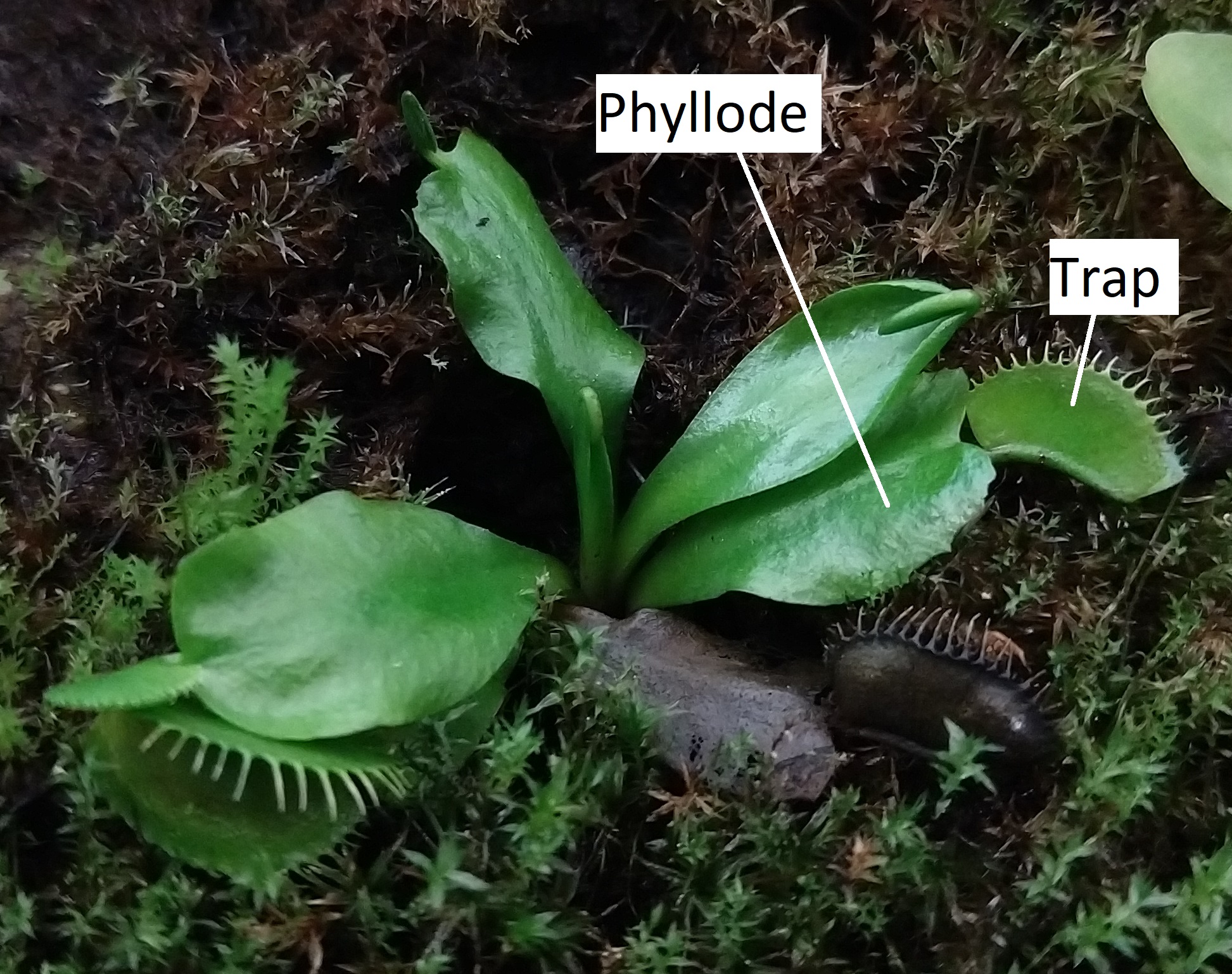
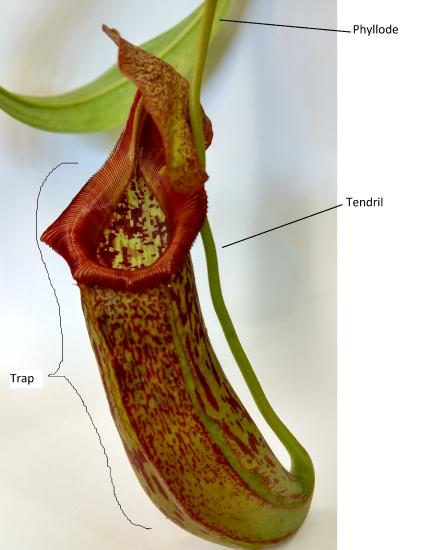

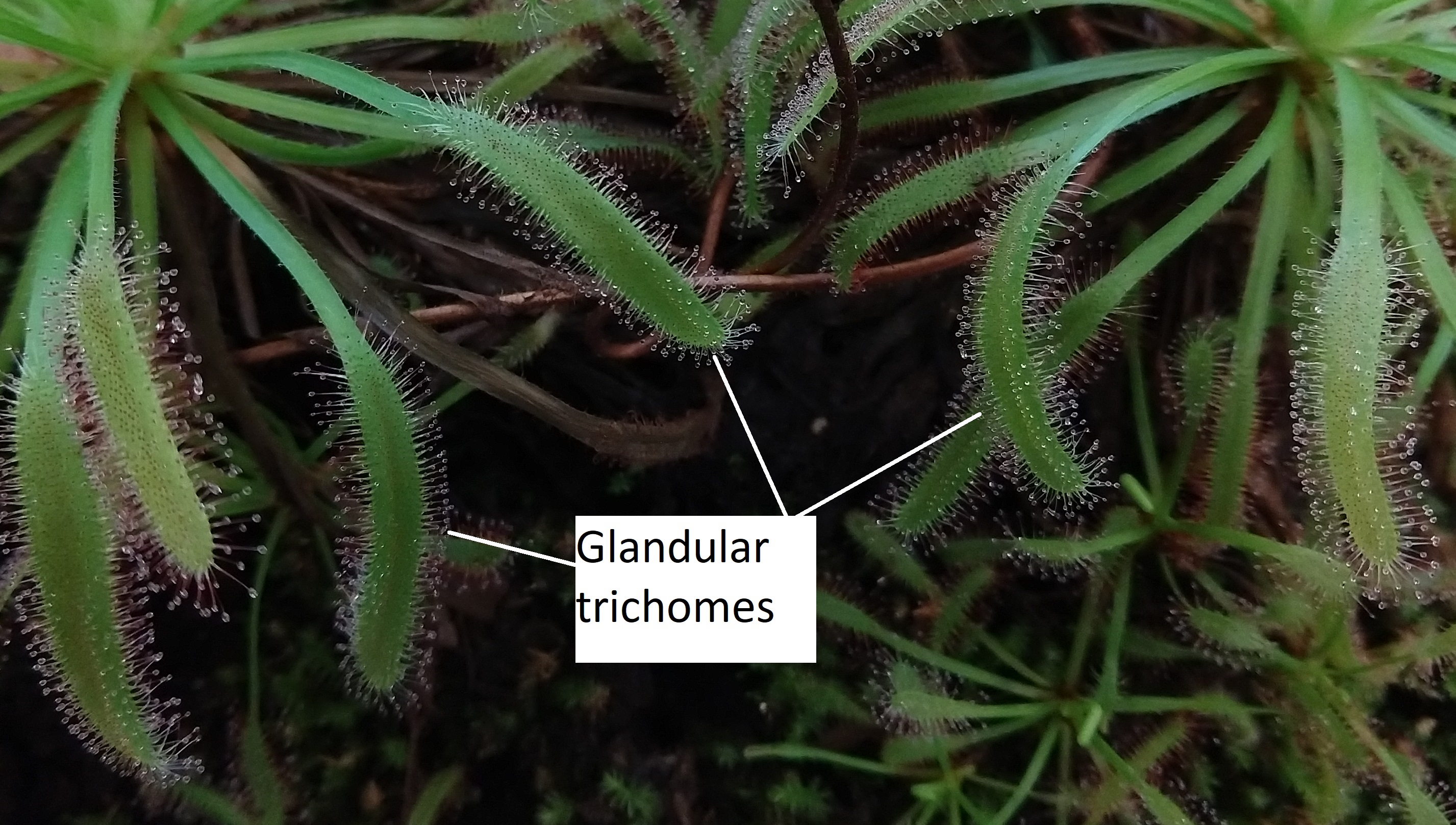
Attributions
Modified by Melissa Ha from the following sources:
- Leaves from General Biology by OpenStax (CC-BY). Access for free at openstax.org.
- Modified Stem and The Leaf from Introduction to Botany by Alexey Shipunov (public domain)
- Modified Leaves from A Photographic Atlas for Botany by Maria Morrow (CC-BY).
- Asexual Reproduction in Plants from Biology by John W. Kimball (CC-BY)


